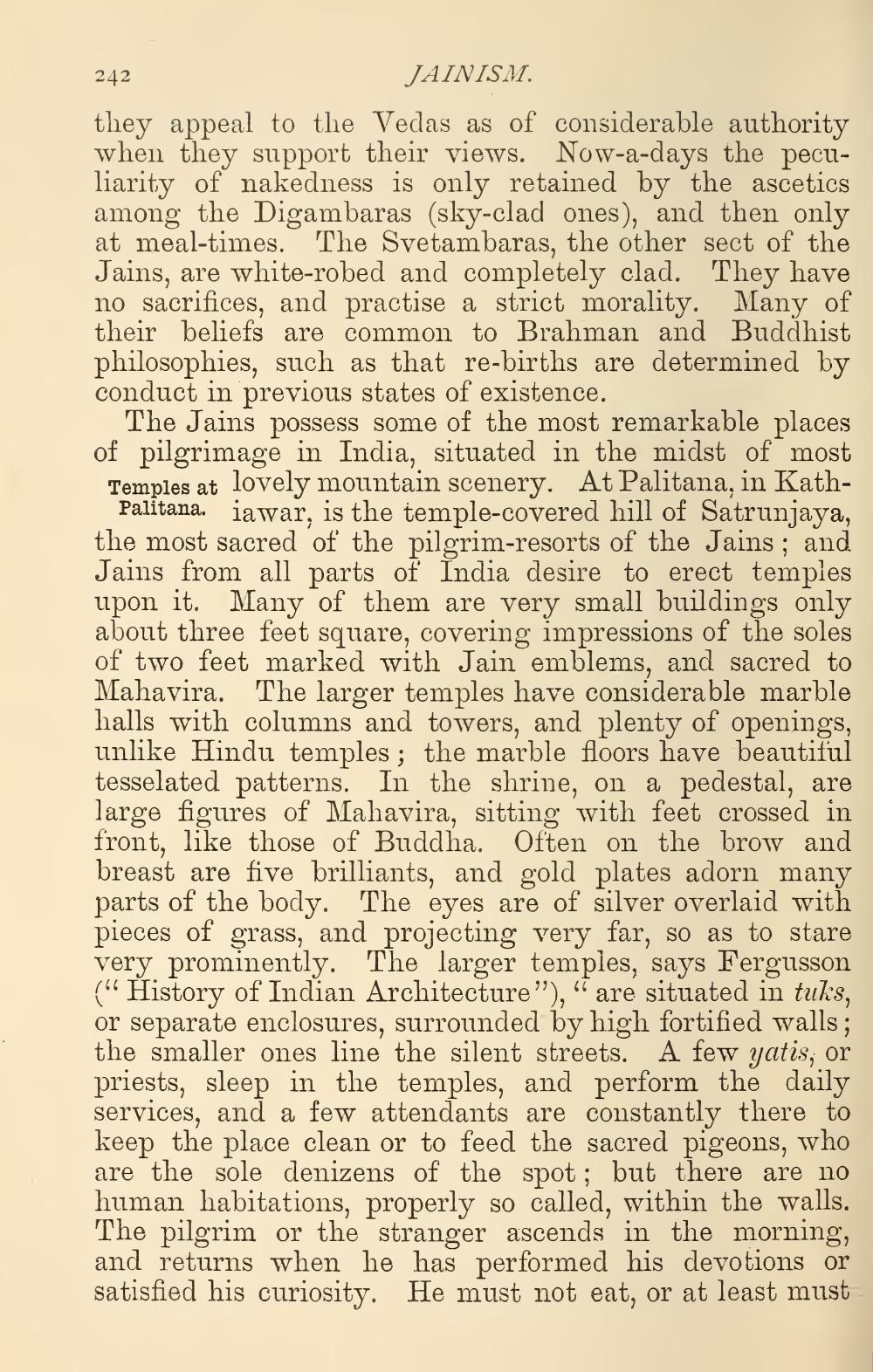________________
242
JAINISM. they appeal to the Vedas as of considerable authority when they support their views. Now-a-days the peculiarity of nakedness is only retained by the ascetics among the Digambaras (sky-clad ones), and then only at meal-times. The Svetambaras, the other sect of the Jains, are white-robed and completely clad. They have no sacrifices, and practise a strict morality. Many of their beliefs are common to Brahman and Buddhist philosophies, such as that re-births are determined by conduct in previous states of existence.
The Jains possess some of the most remarkable places of pilgrimage in India, situated in the midst of most Temples at lovely mountain scenery. At Palitana, in Kath
Palitana. iawar, is the temple-covered hill of Satrunjaya, the most sacred of the pilgrim-resorts of the Jains; and Jains from all parts of India desire to erect temples upon it. Many of them are very small buildings only about three feet square, covering impressions of the soles of two feet marked with Jain emblems, and sacred to Mahavira. The larger temples have considerable marble halls with columns and towers, and plenty of openings, unlike Hindu temples; the marble floors have beautiful tesselated patterns. In the shrine, on a pedestal, are large figures of Mahavira, sitting with feet crossed in front, like those of Buddha. Often on the brow and breast are five brilliants, and gold plates adorn many parts of the body. The eyes are of silver overlaid with pieces of grass, and projecting very far, so as to stare very prominently. The larger temples, says Fergusson ("History of Indian Architecture"), " are situated in tuks, or separate enclosures, surrounded by high fortified walls; the smaller ones line the silent streets. A few yatis, or priests, sleep in the temples, and perform the daily services, and a few attendants are constantly there to keep the place clean or to feed the sacred pigeons, who are the sole denizens of the spot; but there are no human habitations, properly so called, within the walls. The pilgrim or the stranger ascends in the morning, and returns when he has performed his devotions or satisfied his curiosity. He must not eat, or at least must




